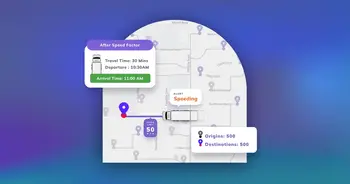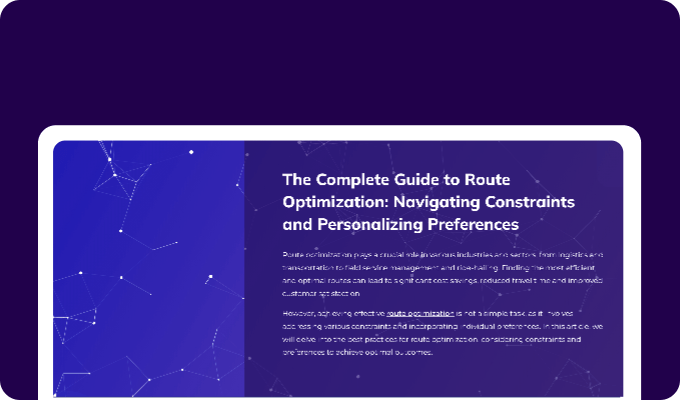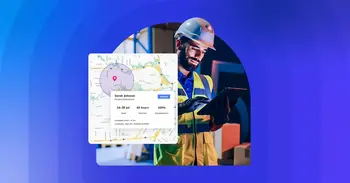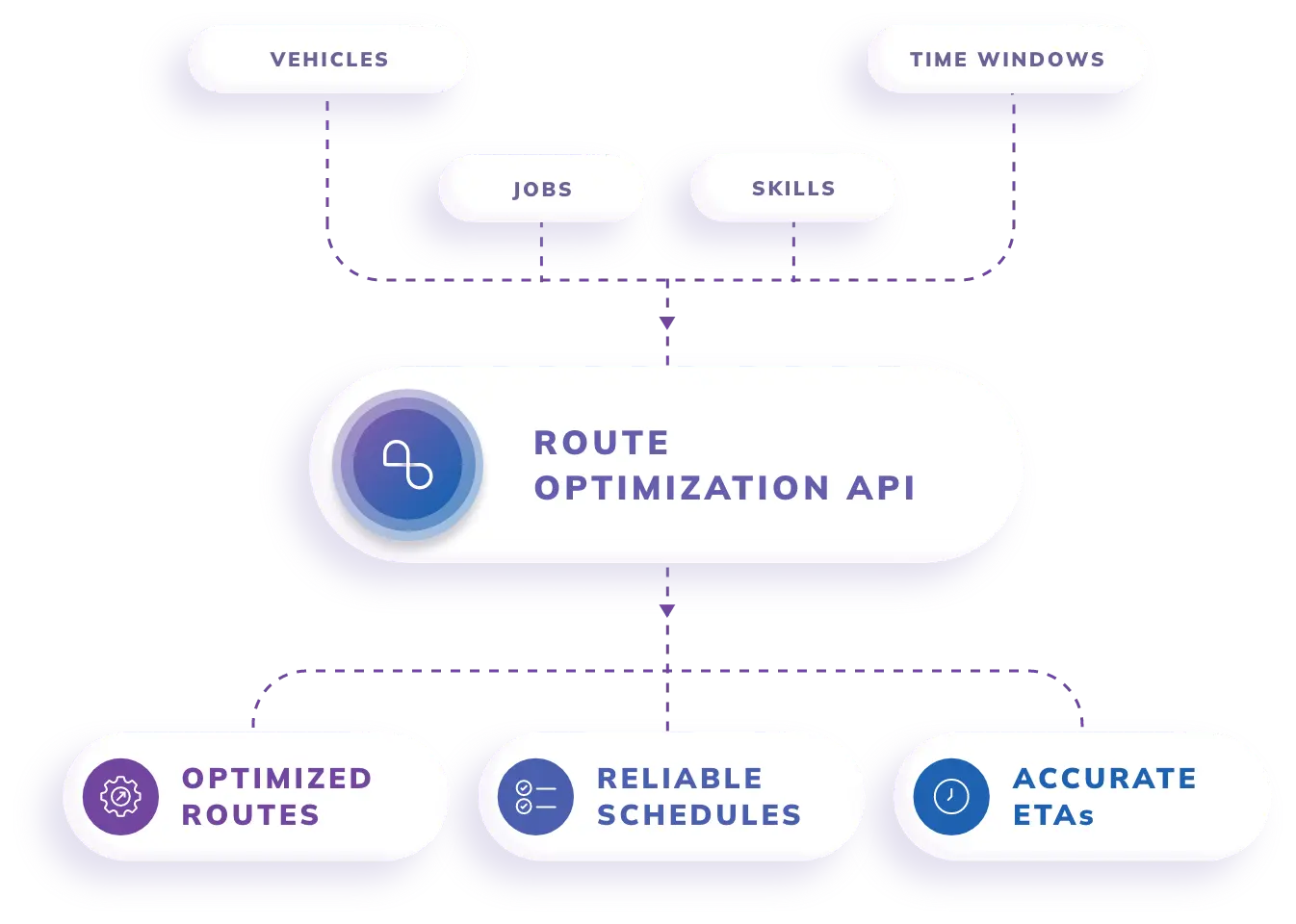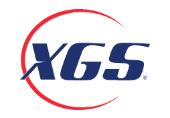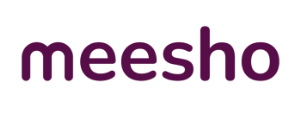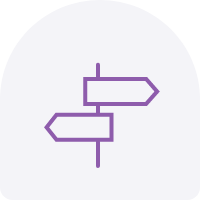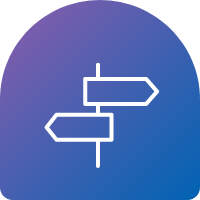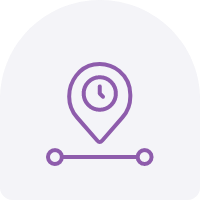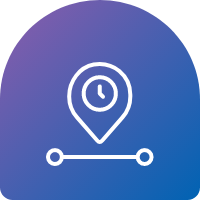Key Features
Incorporate 50+ Hard and
Soft Constraints
Implement over 50 hard and soft constraints for enhanced route and schedule flexibility. Balance time and cost considerations by setting preferences for specific waiting times, task lateness limits and vehicle work hours.
Leverage Custom Objective
Functions
Go beyond travel cost minimization using the custom objectives. Minimize the number of vehicles used or the total time taken to complete tasks. Ensure equal task distribution or keep travel costs within a close range across routes.
Optimize Routes for Various
Vehicle Profiles
A route for a gasoline delivery truck won't work for a waste collection truck — and we get that. With our API, efficiently plan routes for a variety of vehicles, including cars and commercial vehicles.
Design Task Sequences With
Complex Constraints
Arrange task sequences, both direct and indirect, as per your complex business constraints. Define job-shipment connections to ensure sequences follow your preferences and are executed as specified.
Integrate Real-Time and
Historical Traffic
Get routes that adapt to both current road situations and past traffic trends. Give your fleet reliable ETAs tailored to the hour and day of the week.





Use Cases
Trusted by Enterprises and Start-Ups Worldwide






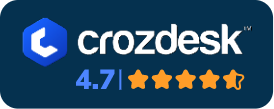



By substantially reducing the number of developer hours spent on scheduling, NextBillion.ai’s MVRP and large Distance Matrix API have helped us improve our operational efficiency and increase our cost savings significantly!

I admire NextBillion.ai's fast response and friendly manners whenever we need professional support in geospatial data processing. They have delivered a valuable service and support to our company that we appreciate.

NextBillion.ai solves the problem of providing a high-performance mapping platform at scale. We generate efficient delivery schedules in real time for hundreds of vehicles, so distance calculations need to be fast and reliable. NextBillion.ai’s Distance Matrix service meets and exceeds this demand.
How To Use
Route Optimization API
What Makes Us Unique

Solve Unique
Use Cases
Utilize over 50 parameters and complementary APIs to fit any workflow, no matter how complex.

Flexible
Pricing
Choose the option suited for your business needs — whether it's asset-based or usage-based.

Designed for
Scalability
Manage nationwide logistical operations for thousands of orders and vehicles.

Exceptional
Support
Receive assistance from our solution engineers throughout your evaluation and integration phase.
Building Blocks for End-to-End Optimization
Explore a range of complementary APIs by NextBillion.ai that enable you to handle unique workflows.
Integrate Seamlessly With
Top Enterprise Clouds, ERPs and CRMs





FAQ
The Multi-Depot Vehicle Routing Problem (MDVRP) is a route optimization problem that involves determining the most efficient route to deliver goods or services from multiple depots to a group of clients.
The MDVRP aims to reduce overall travel distance while considering vehicle capacity, depot location, and route length constraints. MDVRP has many applications in the logistics and transportation industries, where effective fleet management is critical to the company's success.
Route Optimization API has two main components, i.e., the input data and the optimization engine.
- Input data: It consists of all the information about the jobs, which are stops/places to visit, vehicles and shipments, which are pickup and delivery tasks.
- Optimization Engine The optimization engine considers the input data to generate optimized routes for the vehicle fleet. The optimization engine can handle multiple constraints and variables, such as vehicle capacity, time windows and skills, and truck-specific routing parameters.
The POST method submits the input to the Optimization Engine, which returns a unique optimization job id. The GET method retrieves the optimized route result using the unique reference id.
Ready to
Get Started?
Seamlessly integrate NextBillion.ai Route Optimization API into your applications.
Request a Demo Read API Docs
